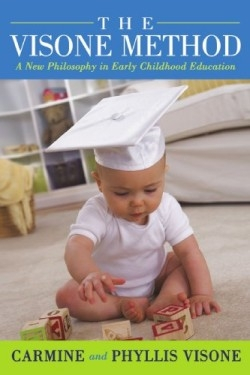The Visone Method
A New Philosophy in Early Childhood Education
- 2009 INDIES Finalist
- Finalist, Education (Adult Nonfiction)
Many educators would likely agree that the United States has lost its focus on education over the past several years. Reduced educational funding and the rising rate of school dropouts may be to blame.
One possible way to combat this perceived educational mediocrity is to start one’s own school, which is exactly what Carmine and Phyllis Visone did. They founded Home Away From Home Academy in New Jersey in 1993. They focused on early childhood education because, they say, “in the time between birth and six years of age we learn fifty percent of what we need for our lifetime.”
At the school, they implemented the “Visone Method,” which “specifically identifies the most credible procedures for each particular stage and age of development to ensure high-quality early childhood education.”
For the benefit of both educators and parents, the Visones detail this method that is based on the underlying belief that infancy through age six are crucial learning years. The authors challenge the widely-held notion that these are “play years.”
In Part I, the authors describe their philosophies, which include such noble directives as “every child is a unique individual with value and rights,” and “a first experience will be carried by the child for a lifetime.” Then the Visones lay out the goals of their method, the curriculum, and the nature of a Visone Method classroom.
Part II presents evidence supporting the Visone Method. This is a smart addition that validates the authors’ methodology for those who may be skeptical. They cite several studies, standardized tests, and the results of a parent survey to demonstrate the method’s broad acceptance and proven effectiveness.
In Part III, the Visones offer an action plan for implementing the Visone Method for various age groups, including detailed curricula separated into three sections for infants, “Waddlers” (ages fifteen- to twenty-four-months), and toddlers. The authors do the same thing in Part IV for preschool through second grade. In both of these parts, the Visones include developmental criteria for assessment and observation. A concluding part of the book identifies “fifteen critical keys to a successful early childhood education facility.”
The book is easy to read and, thankfully, not laden with idealized educational language. Instead, it is down to earth, straightforward, and practical. Carmine and Phyllis Visone willingly share their considerable achievements and offer a roadmap for implementing the Visone Method at other schools. As the authors say, “We have enthusiasm and love for what we teach, and we are confident that the children you care for will greatly benefit from the Visone Method.” This is a book both parents and educators will appreciate.
Disclosure: This article is not an endorsement, but a review. The publisher of this book provided free copies of the book and paid a small fee to have their book reviewed by a professional reviewer. Foreword Reviews and Clarion Reviews make no guarantee that the publisher will receive a positive review. Foreword Magazine, Inc. is disclosing this in accordance with the Federal Trade Commission’s 16 CFR, Part 255.

